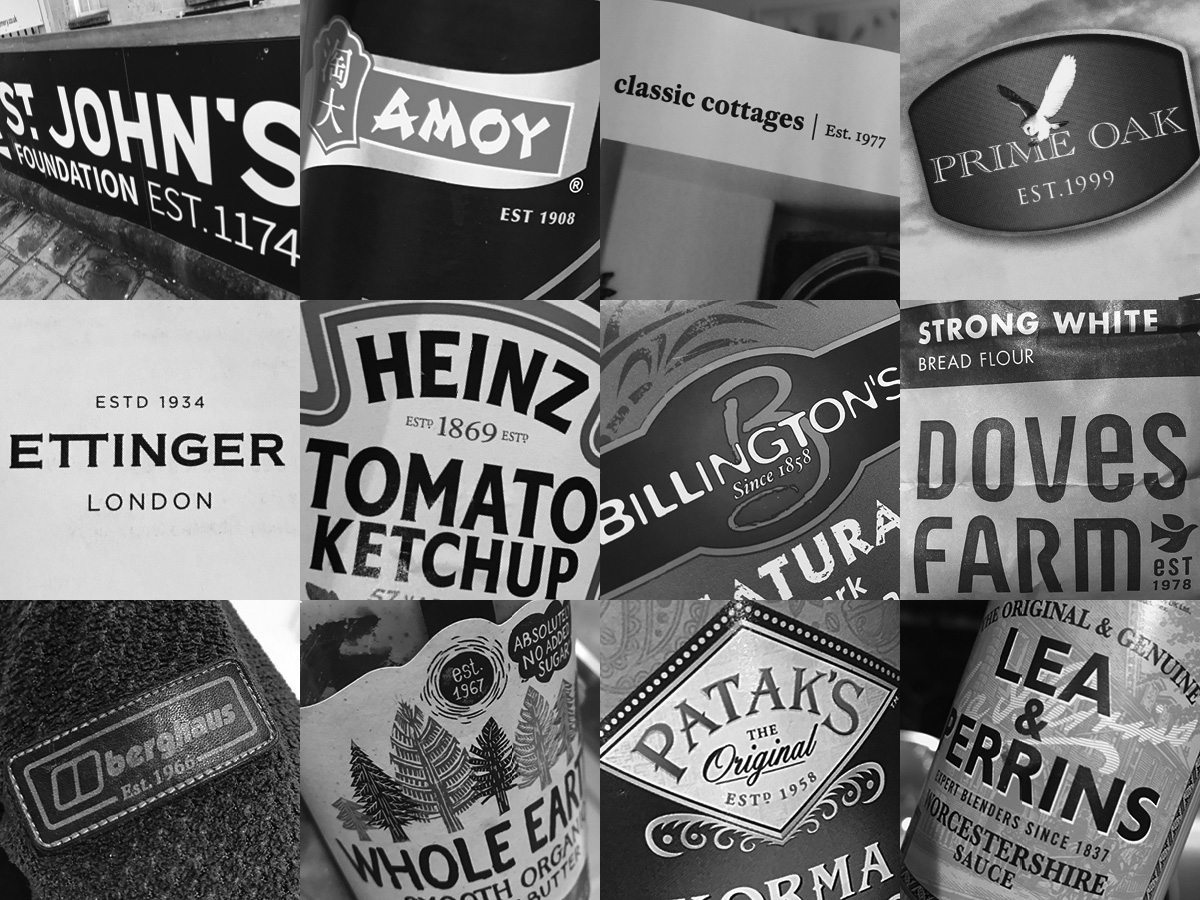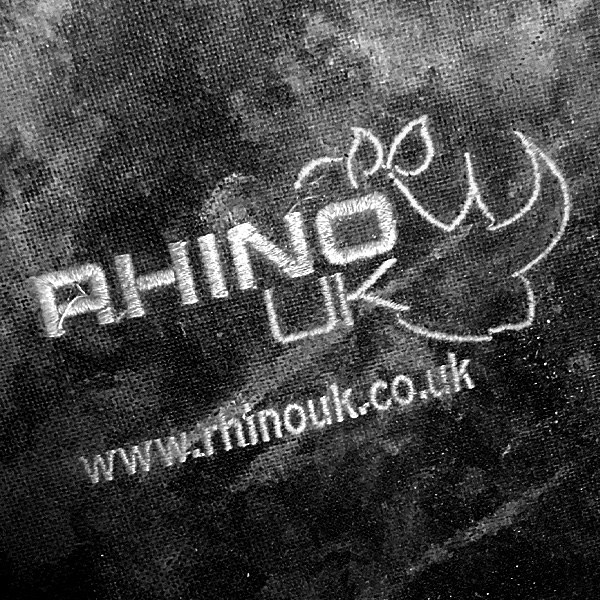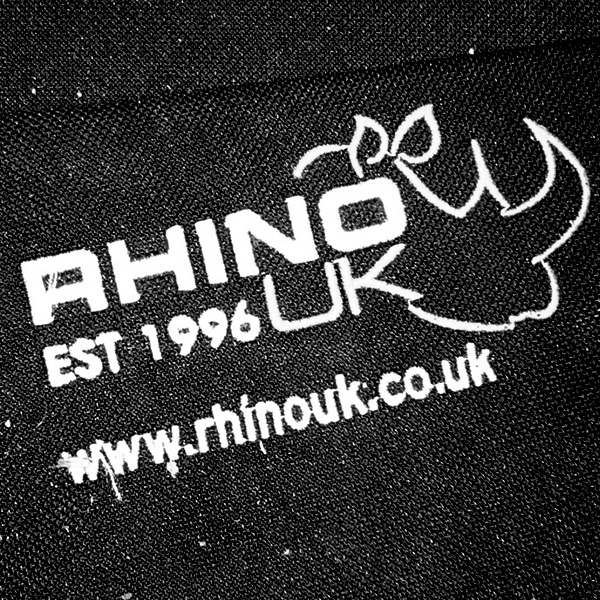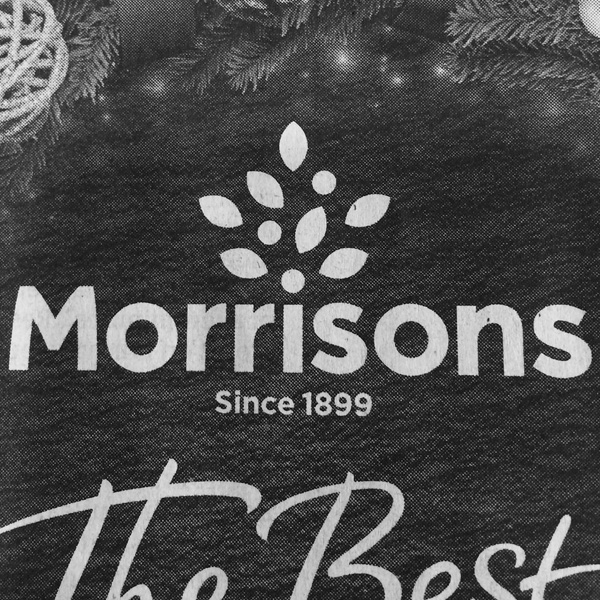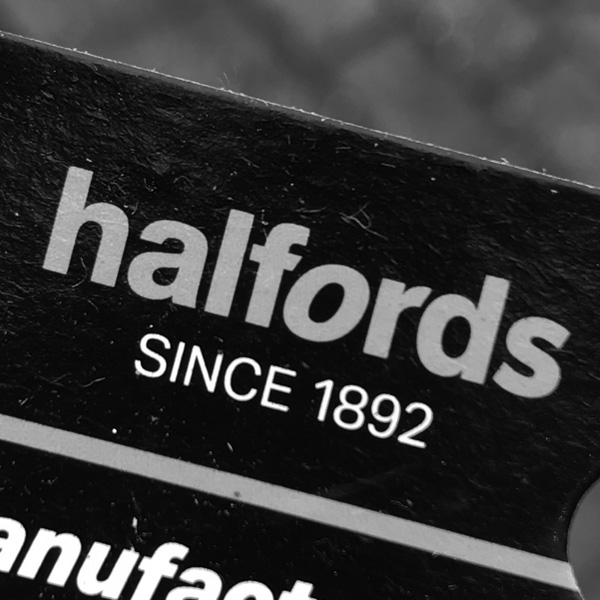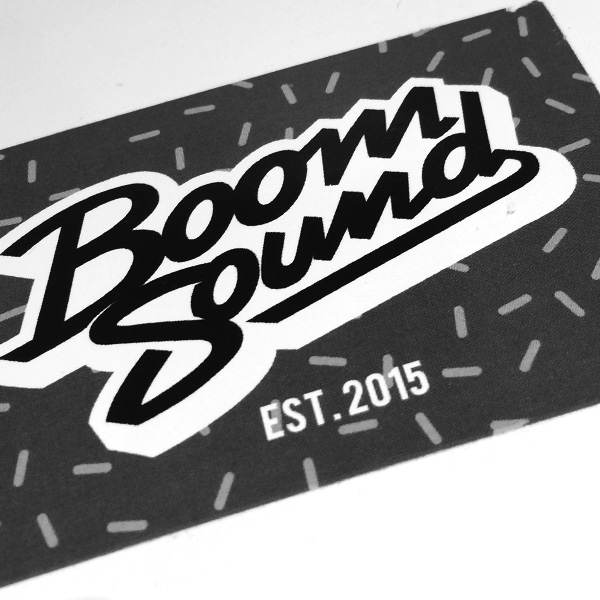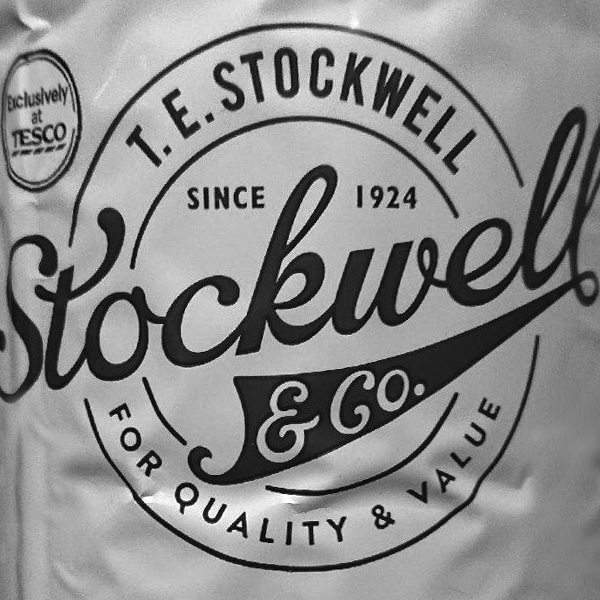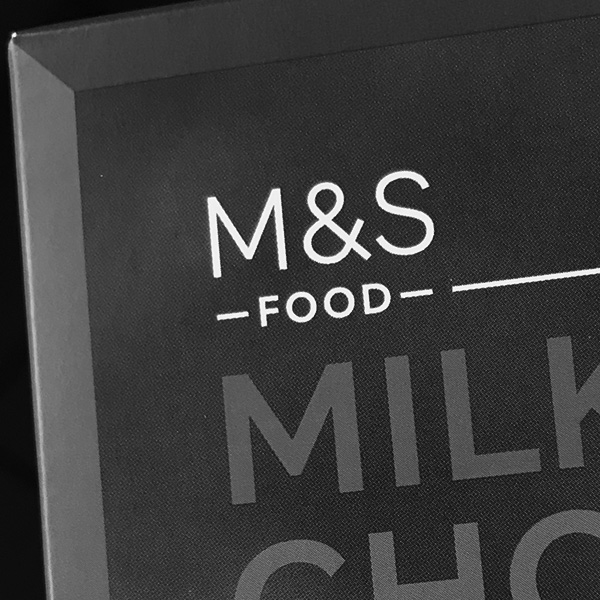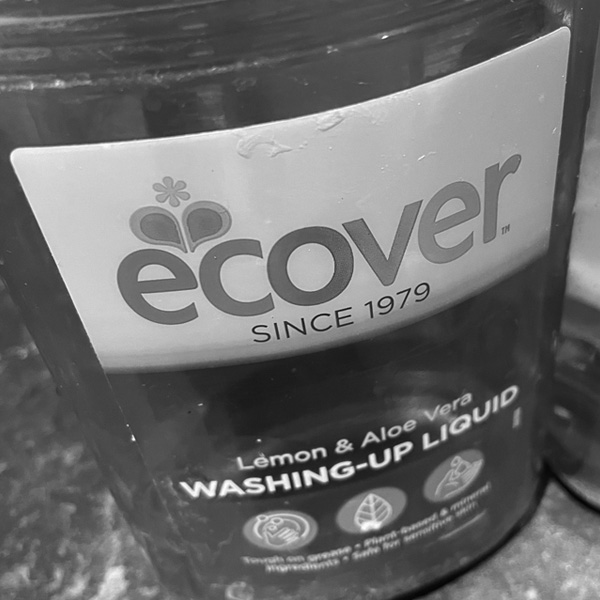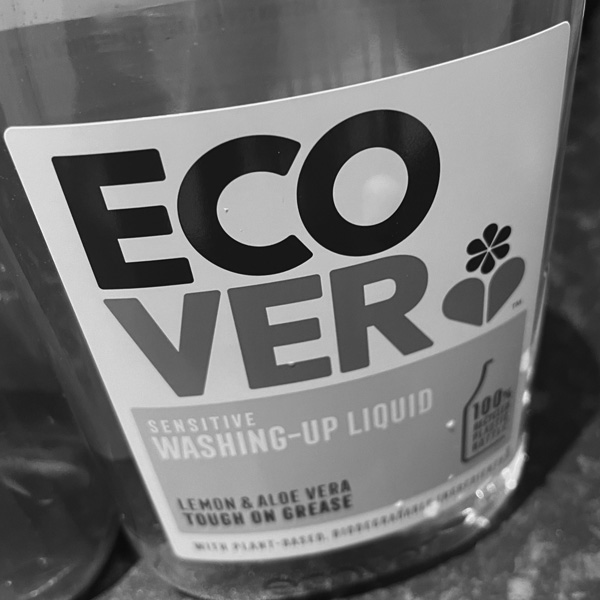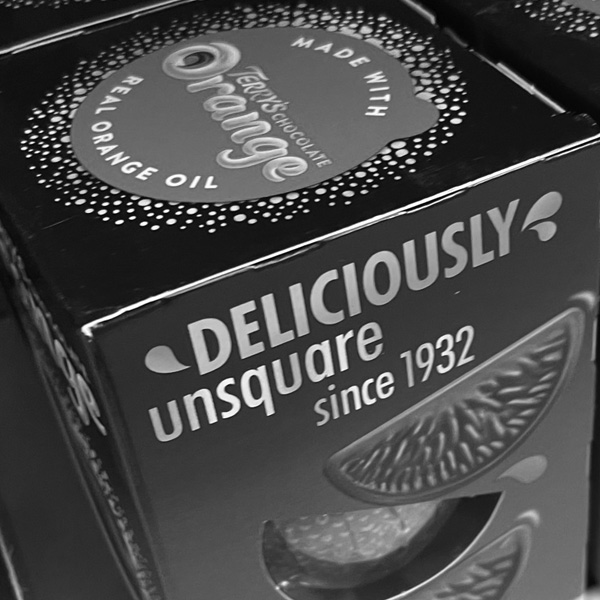Posted on 24 February 2021 by Jeff Fuge | Reading time 8–9 mins
A few years back, I noticed a number of businesses adding the likes of Since 1952 or Est. 2001 to their logos. Since then, every brand and his dog seems to have decided that displaying their 'date of birth' is the thing to do.
Talking of dogs, that's how this began. In 2016, with a mud-magnet of a Golden Retriever in the family, I bought a boot liner for one of our cars.
The liner did the job well, so a few months later I bought one for our other car. The logo on this was the same as the last, but for the fresh addition of Est 1996.
Something clicked.
I'd already spotted that several mainstream brands had recently added dates to their logos. But seeing a relatively small business doing it suggested something interesting was going on.
Bolting your brand's date of birth to your logo had become the thing to do.
I kept my eyes peeled for more… and boy were there more! Brands in every quarter – but especially throughout the B2C arena – were at it. But why?
Authenticity, antiquity and alignment
Highlighting the date your brand or business was founded can help convey:
-
Authenticity
Your brand is real and can be trusted. Showing that you're however-many-years old sets you apart from the newborns in your field. It suggests you have a hard-earned reputation at stake, so are less likely to deliver a dud product or duff service.
-
Antiquity
Your brand has not just been around for a while but, in comparison to your peers, a really, truly, awesomely long while. One that caught my eye was Bath-based charity St John's Foundation, which started in 1174.
-
Alignment
Your business began in a significant year or during a notable period, and you want to show a connection with an aspect of that time. For example, fashion retailer Gap make a show of being established in 1969. This aims to imbue Gap with the attitude of the fashion-conscious and free-thinking 60s.
All of this is generally about persuasion: convincing people why they should choose your business rather than one offering something similar.
But more often than not, the part your brand's date of birth will play in this is going to be a small one.
Imagine being asked by a prospective customer to give them the single best reason why they should choose your brand or business. Would you really say "Because we started in 1998?" or "Because we are five years older than a our main competitor"?
If not, then why shout about it?!
In most cases, you will need to do way more than out-trump the competition in the age stakes to tip a prospective customer's decision in your favour. And there may be more persuasive points that you could bring to the fore in any case.
A persuasion-based statement is also just one of several kinds of message that might occupy that prime piece of visual real estate alongside your logo.
Other kinds of message often have greater potential to set your brand apart from and ahead of the crowd in the hearts and minds of the people who matter.
These include explanations of what your brand is (such as HSBC's 'The world's local bank' or BMW's 'The ultimate driving machine'). Or you could highlight what it does or enables (think Nike's call to arms of 'Just do it' or Ford's promise that they and you will 'Go further').
So, why have some many businesses been putting their birth date front-and-centre? Have they all determined it's the most potent thing they could say about their brand?
Tradition, trends and tricks
Most instances of brands displaying their date of birth fall into one of three categories:
-
The traditionalists
The businesses that have always made a thing about the date they were formed (or, at least, have done so since way before 2014).
These include everyone from Champagne houses and luxury-goods brands, to high-street butchers and local builders. If you notice their date of birth now you've read this but you hadn't clocked it before, it's a sign that it's always been there.
-
The trendsetters and followers
The businesses that never previously made fuss about when they were founded. But recently they have decided to do so now for sound reasons (or just 'cus everyone else is doing it).
Many of those I've come across are tagging onto the tail of the trend. The main hallmark of a follower is that the date is displayed in a way that looks like an awkward addition to the logo, or has been shoe-horned into a convenient space.
-
The tricksters
The businesses who want the benefits of authenticity, antiquity or alignment, and are using some slippery ways to get them.
Typical tricksters are brands that seem to have come out of nowhere, then suddenly appear everywhere, but say they've been around forever.
One catalyst for the recent boom in the bigging-up of birth dates may have been the rise of fictitious producer brands such as Tesco's infamous Boswell Farms.
Invented by marketers to give food products a relatable feel, these so-called 'brands of convenience' fell foul of public opinion – and upset folk with real farms and real names.
In reaction, adding a date of birth was therefore a way of showing that your brand was authentic. It says you have been producing sausages since your great grandfather's day, rather than since a marketing meeting last Wednesday.
The tactic is not an infallible one, however, as ye olde brands can be bought or resurrected. Tesco again provide a good example with their recent introduction of Stockwell & Co (Since 1924) to replace their Everyday Value product branding.
Tesco's founder, Jack Cohen, created the Tesco brand further to buying a batch of tea from a T E Stockwell in 1924. (It's said he took the TES from the tea brand and the CO from his own surname.) But Tesco have now dusted off the Stockwell brand, using the name and date to give products a friendly, traditional feel.
This kind of approach leads to brands that have the illusion of age and experience – and does so to the detriment of those that actually do. Worst of all, they take advantage of customers' trust and ignorance.
When authenticity, antiquity or alignment can be gained by bending brand-birthday truths, people will become sceptical. And when adding a date of birth goes from being a point of positive difference to something everyone is doing, people really will start to switch off.
Time to move on
Five years after I first noticed the trend emerging, some brands are still blindly jumping on the bandwagon. But there are signs the approach is running out of steam, and that savvy brands are moving onwards and upwards.
Take Marks & Spencer as an example. M&S introduced their date of birth when their logo was updated in 2014. It has since appeared extensively, but in 2020 they began replacing it on their food packaging with the word Food.
Recent reports show that the food side of the M&S is doing OK, but the clothing side has been struggling. So the change may be a sign of the two sides of the business being moved further apart. My guess is that a significant repositioning of their clothing and home offer may be in the pipeline.
Come what may, M&S have been around for the best part of 150 years but shouting about it (in the food aisles, at least) seems to have only lasted for six.
2014 was also the year that environmentally friendly cleaning brand Ecover added Since 1979 to their logo. As can be the case with brands that have a forward-thinking aspect to their appearance or ethos, the inclusion of a date looked and felt awkward.
A visual rebrand in 2019 saw the date washed away. However, as befitting an eco-brand, the date wasn't dumped but upcycled. It is now put to use in the lead sentence on the back of bottles and packs. Here it helps explain that Ecover have been on a mission for a cleaner clean since 1979.
And that provides some insight into where all of this is could be heading.
There can be merit in showing you've been around for donkey's years. But it's far more meaningful to focus on something engaging that has been present throughout that time.
Confectionery brand Terry's Chocolate Orange pitch this sweetly with their notion of being Deliciously Unsquare Since 1932.
The quirky form of words makes the idea memorable, and cleverly provides scope for use on product variants such as bars and segments. It also feels like a concept with the breadth and campaignability that would allow the brand to stick with it for a long while.
Meanwhile, alcoholic-beverage business Diageo are advertising how their vodka brand Smirnoff has been Infamous Since 1864, and that their gin brand Tanquerary has an Unchanged Recipe Since 1830.
Sports shoe and clothing brand New Balance have been Fearlessly independent since 1906. The makers of Worcestershire sauce, Lea & Perrins have been Expert blenders since 1937. And cracker company Jacob's say their products have been Simply baked since 1985.
Will these ideas become conceptual cornerstones of their respective brands over the long term? While they all work so much harder than quoting a date alone, some feel more meaningful than others.
And even with one I'd back to stand the test of time, Terry's, I see they've omitted the date from their Deliciously Unsquare TV ads. A sign, perhaps, that their use of the date was still more about being part of a trend than something that will become a permanent tradition.
Still want to make a date?!
Adding your founding year to your logo is unlikely to make your brand the best of breed. And doing it now means you may just blend in at the back of the date-displaying pack.
People are switched on to the familar presence of brands' dates of birth (albeit subconsciously in most instances) and may infer something positive from it. But people will switch off when dates are there for the sake of a trend or a trick and add nothing of note.
So, if you are going to dust off the date your brand got going and you want do something prominent with it, you will need to:
-
Make sure it's an impressive age
Note that 'impressive' is a relative term. If your company make clocks, impressive might be 200 years. If you run a restaurant in a trendy and competitive part of town, impressive could be 20.
-
Make sure it's part of an inspiring idea
Your concept needs an angle that sets it apart – and at the same time helps it connect with, compel and convince your audience. In other words, ensure that it's an idea that both matters to you and really matters to them.
-
Make sure it's all irrefutable
Your start date – and what you say your brand has been or been doing since then – must be genuine and stand up to a spot of scrutiny. People will ultimately sniff out any fibs and falsehoods. (But probably not as quickly as our Golden Retriever could smell the muddy puddles that led me to buy those boot liners that triggered all of this!)


